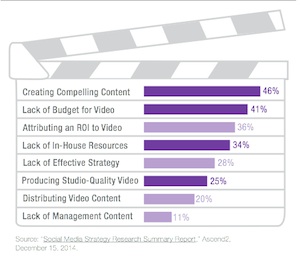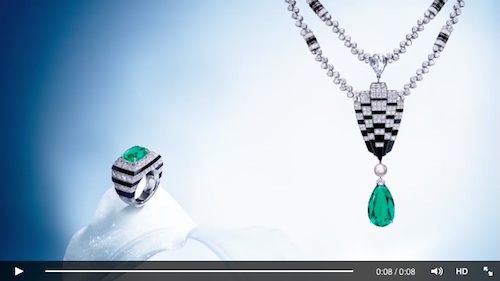Articles and News
Study Proves Inexpensive Online Video Content Is More Engaging Than High-Cost Productions | September 09, 2015 (0 comments)

New York, NY—When it comes to social media video marketing, what counts more: the number of people who see it, or the number who engage with it?
To clarify, views simply mean the number of people who saw it on their page, whereas engagement means the number of viewers who actively did something to respond to it: they turned up the volume, “liked” it, commented on it, shared it, and so forth.
The good news for luxury jewelers is that the videos that consistently garner the highest levels of engagement on social media aren’t the ones that feature big-budget production. Instead, they’re the ones that feature product shots—something that’s far less costly to produce and even potentially possible to create on a DIY level.
L2, a benchmarking and education firm for digital marketing, recently released its Intelligence Report: Video, which finds that product videos generate significantly more engagement on Facebook than other genres. This holds true across a wide variety of categories from fashion to beauty and including jewelry and watches, says Mabel McLean, lead researcher on the study.
For example, Tiffany & Co.’s top-performing Facebook video offers a close-up view of the company’s signature engagement ring (top of page) with animated hearts surrounding it. Viewed only 127,000 times, the video nevertheless engaged viewers as well as couples, generating an 18% engagement rate. However, the brand’s “Will You” campaign video was far less successful. The short proposal story was widely seen with 1.7 million views, but generated only 2% engagement.
Cartier’s experiments with branded short films on the social platform confirm this observation. Its latest, “The Proposal,” drew 440,000 views and generated an engagement rate of 4.9%. But detailed shots of Cartier jewelry saw 18.6% engagement on only 7,000 views—six times higher engagement than the typical video with an average view count.
This eight-second video of Cartier jewelry close-up garnered an 18.6% engagement rate, although the only movement in it is the emerald pendant swinging gently.
“Closeup images of beautiful jewelry, perhaps with some animation, garnered much greater engagement than high-cost long-form productions,” McLean told The Centurion. The kind of video she is describing is simply photos of beautiful product that’s for sale.
What worked for Tiffany and Cartier will work for independent luxury jewelers too, says McLean. And because it’s fairly low budget, it can level the playing field between big brands with big marketing budgets and a single store with limited resources.
Creating engaging Facebook video from product shots is quite an easy—and inexpensive—option for independent jewelers.
But how inexpensive is it? Can you do it yourself? McLean says yes, if you’re very good or if you have a talented photographer or videographer among your staff. She suggests looking at the Tiffany and Cartier examples first for guidelines of a high-quality product video. Both feature the product as star: isolated, not on a desk or on someone’s hand and filmed with a cell phone. If you don’t have a fairly sophisticated level of talent with a camera, it probably would be better to hire a pro to do the job—but it still comes at a far lower price than using actors, sets, hair and makeup, and all the other elements of a long-form commercial.

This graphic from L2's Video study shows the reasons why marketers hesitate to produce videos. But its findings about engagement with simple product-focused videos can alleviate some of the key reasons holding them back.
But relatively inexpensive still isn’t free, so what’s the ROI? McLean says you can’t draw a straight line from social media engagement to sales, any more than you can draw a line from traditional advertising to sales.
It comes down to the sophistication of your targeting, says McLean. On Facebook all ad videos are targeted by age and income, and of the three major social media sites—including Instagram and Twitter—Facebook has the most sophisticated targeting method. It’s on a par with YouTube, she says, whereas both Twitter and Instagram have relatively limited ability to target your audience.
For more information about L2’s findings on video marketing, including how and where to buy video time on social media, click here.








